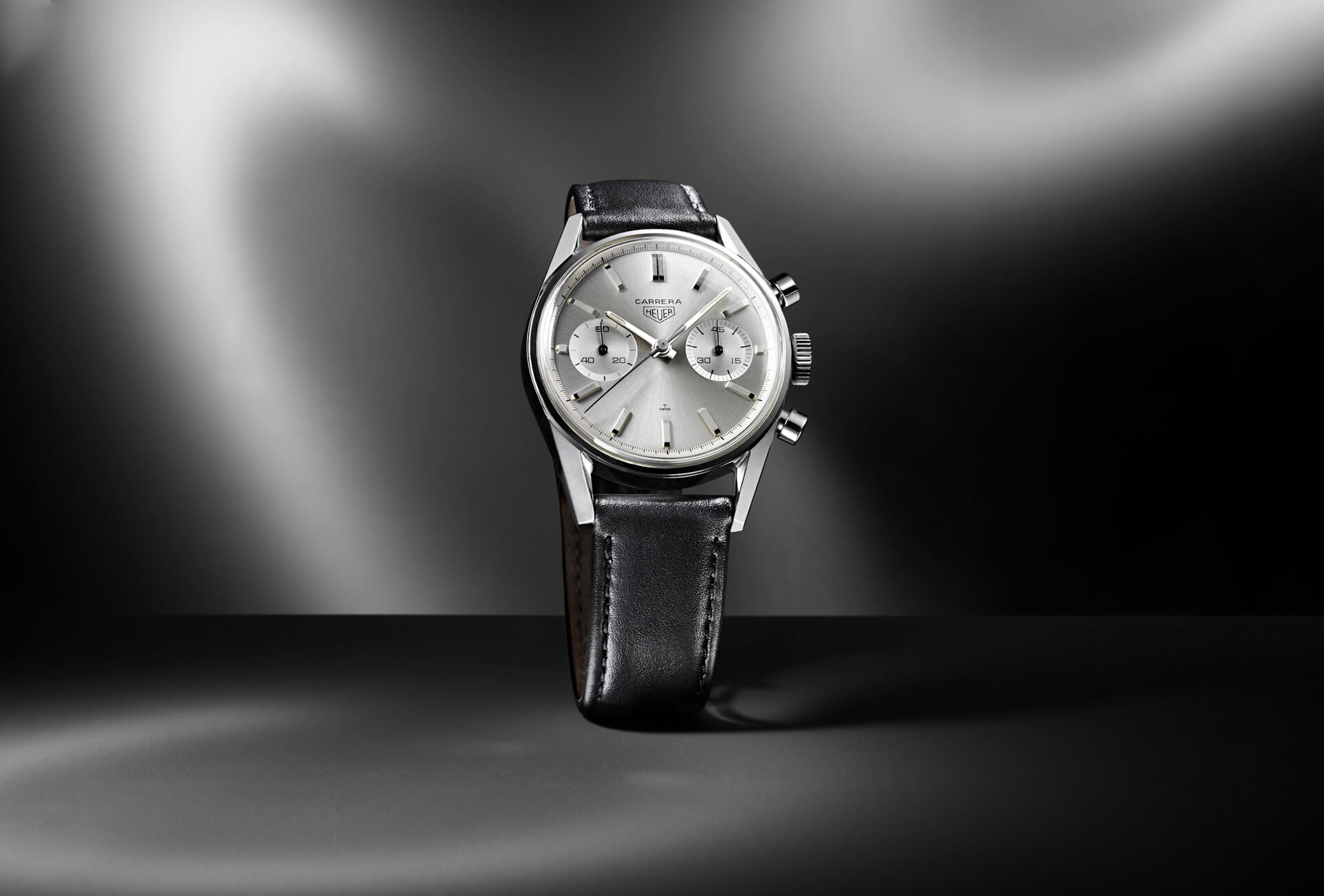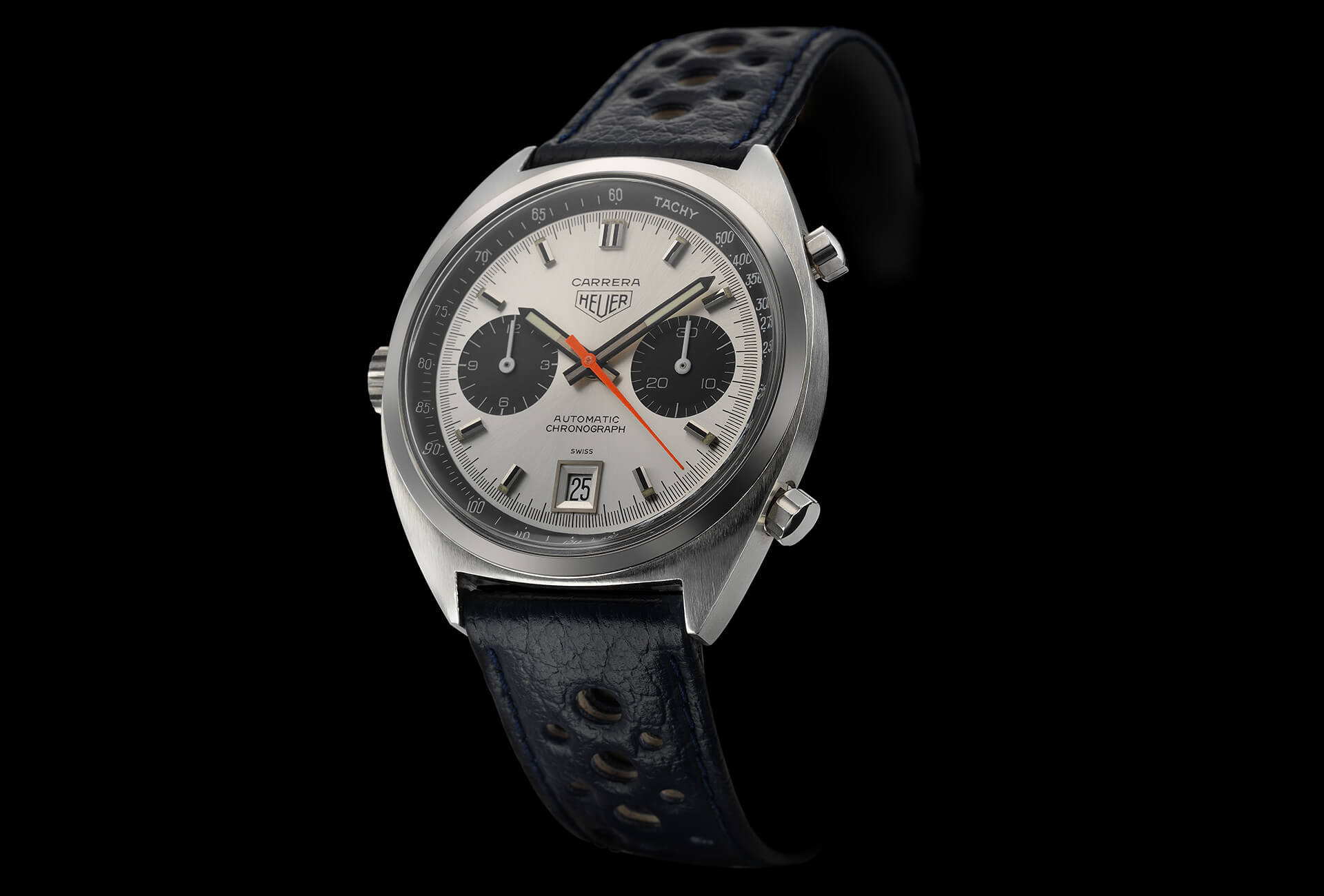Here’s the story of a watch with a thousand faces. A 55-year-long saga with its moments of glory but its darker episodes too. Thrust onto the motor-racing scene in 1963, worn on legendary circuits by the world’s fastest drivers, the Carrera has become a mainstay in TAG Heuer’s catalogue. From its early successes in the high-octane atmosphere of the paddocks to the quartz collision course, from its mechanical transformations to the smartwatch of tomorrow, the Carrera skilfully negotiates every twist and turn in its history, racing down the straights without ever deviating from its path.
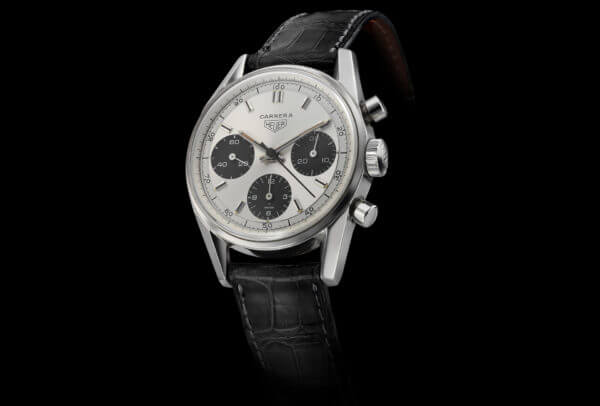
The very first Carrera chronograph was a far cry from the high-mech, powerful chronos that have added to TAG Heuer’s flagship collection in recent years. Functional, legible, minimalist even – right from the outset, the Carrera went against the prevailing trend for complex chronograph dials that layered tachymeter, telemeter and other spiral scales with no concern for easy read-off. When Jack Heuer, himself a big motor-racing fan, got it into his head to design a watch for racecar drivers, he was inspired by the modern design he so admired as a youth; by the clean and simple lines of Le Corbusier, Charles Eames, Eero Saarinen or Oscar Niemeyer. His goal: to design an ergonomic chronograph that would be easy to use and immediately legible including at full speed. The Carrera’s revolutionary dial would be the key to its success. For the first time ever, fifths of a second were printed on the inside of the tension ring that holds the crystal to the case, clearing space on the dial to give this new watch the uncluttered legibility Jack Heuer had been aiming for.
"The racecar driver's watch"
Jack’s choice of name was equally inspired. The first time he heard the word “carrera”, in reference to the legendary, week-long Carrera Panamericana road race of the 1950s, there was no doubt in his mind. In his autobiography, The Times of My Life, he recalls how “I loved not only its sexy sound but also its multiple meanings, which include road, race, course and career. All very much Heuer territory! So as soon as I got back to Switzerland I rushed to register the name under Heuer Carrera”. All the pieces of the puzzle, and success, were falling into place.
In 1969 the Carrera reached the first milestone in its history when it took the famous Calibre 11 with microrotor on board.
Racecar drivers gave the watch an unreserved welcome. As early as 1969, the Carrera reached the first milestone in its history when it took the famous Calibre 11 with microrotor on board. This was a feat of technique for Heuer, one of the few manufacturers capable of devising and producing such an innovative self-winding chronograph movement. With characteristic vision, Jack Heuer sought professional endorsement for his watch. Niki Lauda, Clay Regazzoni, Jacky Ickx, Mario Andretti, Jo Siffert, Emerson Fittipaldi, Ronnie Peterson… the Carrera took off on the wrist of these kings of speed, particularly after 1971 when Jack began the tradition of presenting each new Ferrari driver with an 18k gold Carrera chronograph, with his name engraved on the caseback. “This also gave a boost to sales,” he writes in his autobiography. “Today, these personalised chronographs remain much sought after by collectors.” By way of example, one of these “racecar driver’s watches”, as they were known, a gift to Swedish driver Ronnie Peterson in 1972, sold at auction in 2016 for CHF 225,000 ($230,000). That’s quite a performance for a watch that would originally have been worth a maximum CHF 1,000!
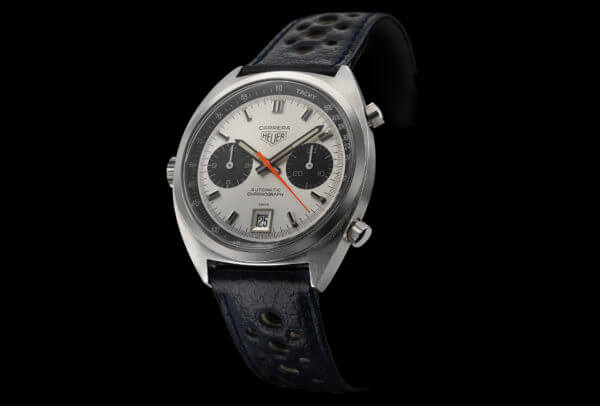
From quartz to connected
In the early 1970s, the Carrera’s future looked to be all mapped out, which didn’t prevent changes to its design. The trend was for smoked dials, two-tone cases and asymmetric shapes, and the Carrera was to be no exception. It appeared in a tonneau case and, where once its dial had been proudly inscribed “Automatic Chronograph”, it now bore just one word: “Quartz”. The Carrera was headed for disaster – and so was Heuer the business, which threw in the towel in 1982. Two years later it was taken over by the Piaget group, which also owned movement-maker Nouvelle Lémania. First to benefit was the Carrera, which rose from its ashes in 1984, driven by a Lémania 5100 movement.
Of the standout models of the past twenty years, the Carrera Calibre 360 Concept was the first mechanical wrist chronograph accurate to 1/100th of a second.
Even so, quartz had taken its toll. It wasn’t until 1996 and the revival in interest in mechanical and vintage watches that the Carrera made a real comeback. Since then, it has emerged not only as a top-selling model for the brand, but also a champion of precision on the horological circuit. Among the many standout models of the past twenty years is the Carrera Calibre 360 Concept, the first mechanical wrist chronograph accurate to 1/100th of a second, which debuted in 2005. In 2010, the Carrera was back in pole position with the introduction of Calibre 1887, an in-house chronograph movement developed from a Seiko base. In 2011 the brand chose the Carrera as a vehicle for innovation with the Carrera Mikrograph. Accurate to 1/100th of a second, it has two balance wheels and two escapements. It followed this a year later with the Carrera Mikrogirder, accurate to 5/10,000th of a second.
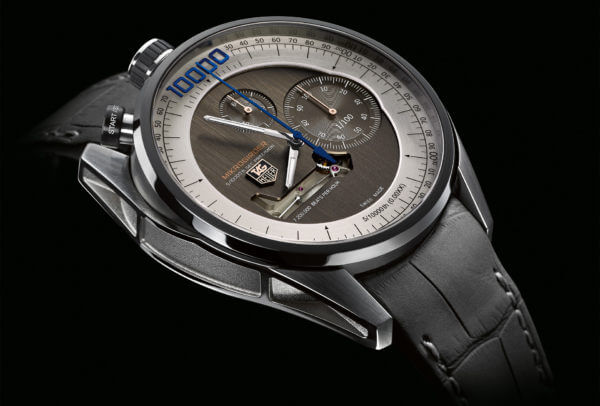
A model of precision, the Carrera now enjoys star status among TAG Heuer’s collections. As a chronograph, it encapsulates the brand’s mechanical expertise, captured in the Heuer 01 movement. It lends itself to day/date and GMT models, too. The Carrera’s design codes have also inspired the Connected Modular smartwatch, its classic dial looking as good as ever in digital format. Fifty-five years after its launch, TAG Heuer’s star watch is very much on-track.








